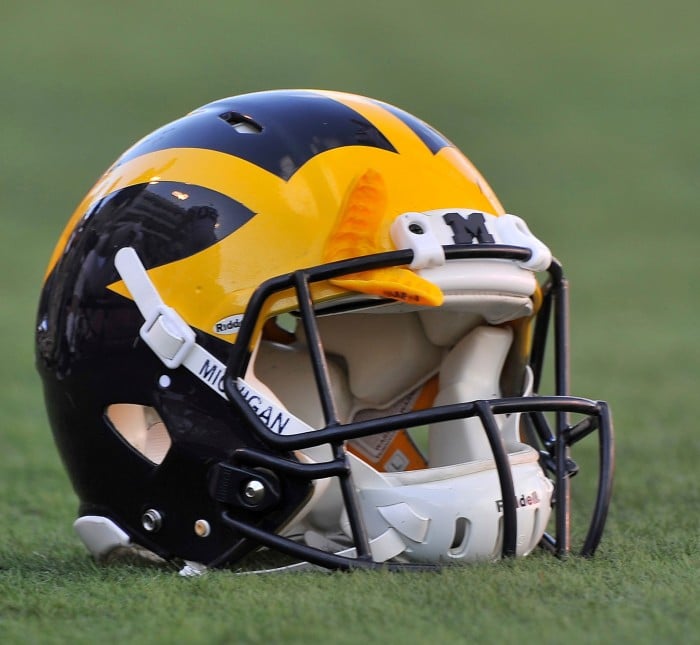This Football Helmet Design Promises to Protect the Brain, Not Just the Skull
Helmet designers have so far failed to account for a key cause of brain injury—the kinetic energy that travels through the head after an impact and makes the brain slosh inside the skull. That’s according to Ellen Arruda, a mechanical engineering professor at the University of Michigan, who is leading an effort to change that. She and her colleagues have unveiled a prototype of a new helmet technology capable of dissipating a significant portion of that kinetic energy, also known as the impulse, before it reaches the brain.
Football helmets have evolved over the years, and some of the changes reflect attempts to mitigate the risk of brain injury. But while they are good at absorbing the force of an impact and thereby preventing skull fractures, no helmet on the market is capable of absorbing a significant amount of the impulse, says Arruda. Military helmets face the same problem.

In laboratory tests using a model of the skull and brain, the prototype from Arruda’s group reduced both the force of impacts and the resulting impulse by an order of magnitude compared with the conventional helmet design.
The fundamental challenge of designing a helmet that protects the brain as well as the skull is one of mechanics, says Arruda, and that requires finding the right materials to do the job. The skull is an elastic material, meaning it can’t absorb much of the impulse, if any, she says. The brain ends up taking the brunt of it, and since it floats in cerebrospinal fluid and is not connected to the skull, it sloshes, causing injury (see “New Collar Promises to Keep Athletes’ Brains from Sloshing Around”).
A helmet that fractures or deforms after an impact could protect against this. But while that may be a good way to protect soldiers or bikers, a practical football helmet must be able to survive repeated hits, and be worn game after game. “Our approach is intended to be used over and over again,” says Arruda. Key to the new design is a material with so-called viscoelastic properties, meaning that when it is deformed it exhibits characteristics that are similar to both viscous materials, like honey, and elastic ones, like rubber. Viscoelastic materials are commonly used in shock absorbers.
The new prototype is made of three inexpensive polymers, including a viscoelastic one. The trio works in concert to absorb the pressure wave that travels through the head after an impact. Arruda and her colleagues developed a scheme that relies on the properties of the first two layers to “tune” the wave so that when it hits the viscoelastic layer, its frequency is within the range that material can absorb. The same principle, which the researchers describe in a recent peer-reviewed publication, could be used to make better helmets for soldiers as well.
The group recently won a $250,000 award for being one of five finalists in a contest sponsored by the National Football League, General Electric, Under Armour, and the National Institute of Standards and Technology (NIST). The contest was focused on innovative materials for helmets. The researchers now have another year to fine-tune their design and then submit it to NIST, which will do further testing and determine the winner.
Keep Reading
Most Popular
Large language models can do jaw-dropping things. But nobody knows exactly why.
And that's a problem. Figuring it out is one of the biggest scientific puzzles of our time and a crucial step towards controlling more powerful future models.
The problem with plug-in hybrids? Their drivers.
Plug-in hybrids are often sold as a transition to EVs, but new data from Europe shows we’re still underestimating the emissions they produce.
Google DeepMind’s new generative model makes Super Mario–like games from scratch
Genie learns how to control games by watching hours and hours of video. It could help train next-gen robots too.
How scientists traced a mysterious covid case back to six toilets
When wastewater surveillance turns into a hunt for a single infected individual, the ethics get tricky.
Stay connected
Get the latest updates from
MIT Technology Review
Discover special offers, top stories, upcoming events, and more.